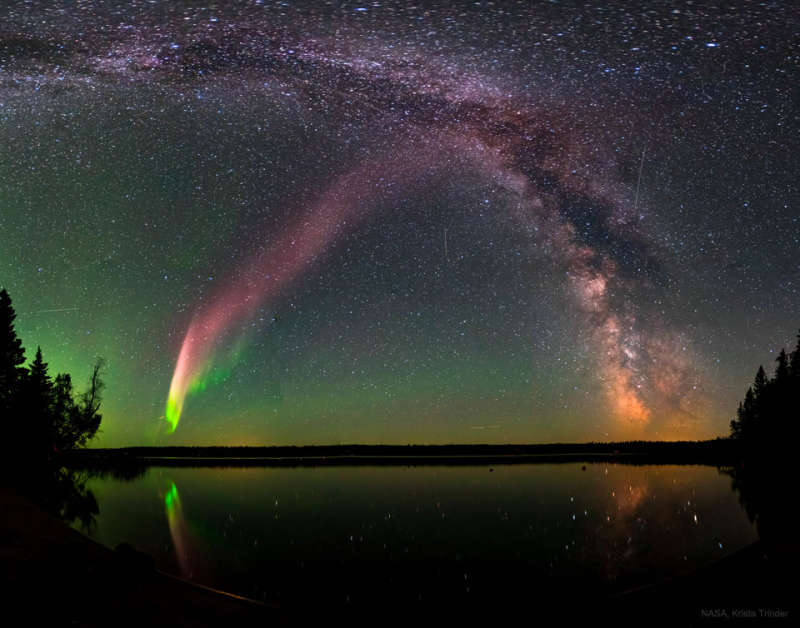
|
Credit & Copyright: NASA,
Krista Trinder
Explanation:
What's creating these long glowing streaks in the sky?
No one is sure.
Known as
Strong Thermal Emission Velocity Enhancements (STEVEs),
these luminous light-purple sky ribbons may resemble
regular auroras,
but recent research reveals significant differences.
A STEVE's great length and unusual colors, when measured precisely,
indicate that it may be related to a
subauroral ion drift
(SAID),
a supersonic river of hot atmospheric
ions thought previously to be
invisible.
Some STEVEs are
now
also thought to be accompanied by
green picket fence structures, a series of
sky slats that can appear outside of the main
auroral oval that
does not involve much glowing
nitrogen.
The featured wide-angle composite
image shows a STEVE in a dark sky above
Childs
Lake,
Manitoba,
Canada in 2017,
crossing in front of the central band of our
Milky Way Galaxy.
|
January February March April May June July August September October November December |
| |||||||||||||||||||||||||||||||||||||||||||||||||||||||
NASA Web Site Statements, Warnings, and Disclaimers
NASA Official: Jay Norris. Specific rights apply.
A service of: LHEA at NASA / GSFC
& Michigan Tech. U.
Based on Astronomy Picture
Of the Day
Publications with keywords: atmosphere
Publications with words: atmosphere
See also:
